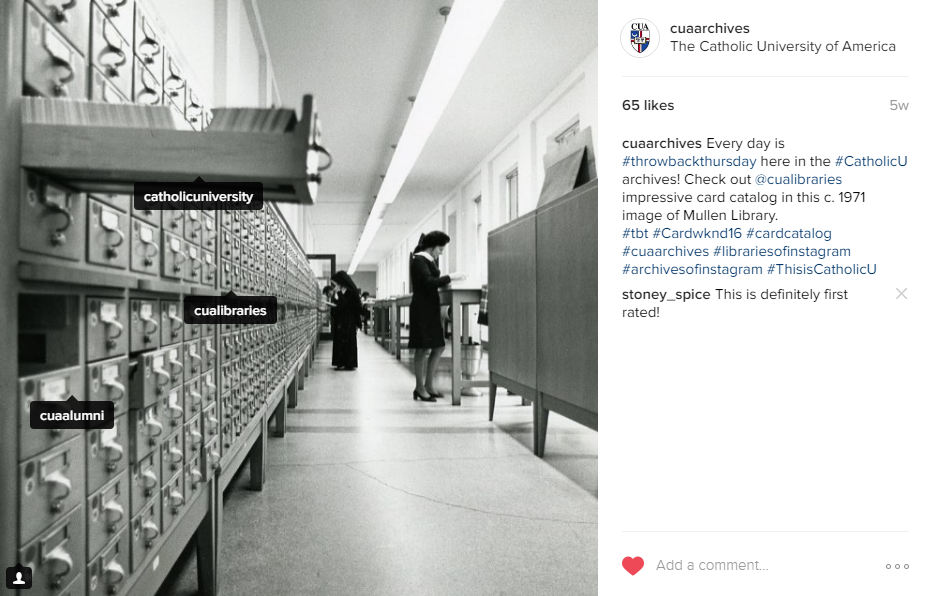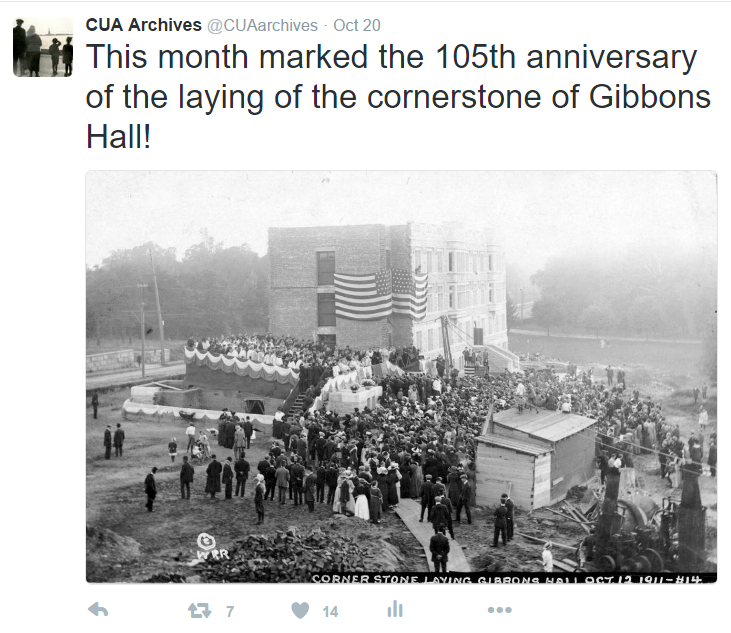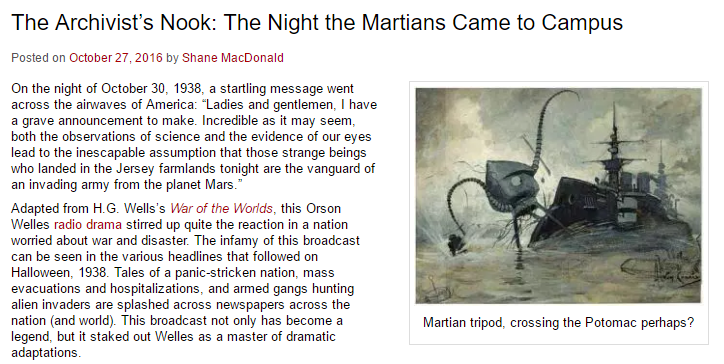Author Katherine Santa Ana served as Graduate Library Pre-Professional (GLP), 2015-2017.
Social media can be a powerful tool for libraries, archives, and museums to create a branded, collaborative online presence. But where to begin? Before diving head first into the latest social media trends, cultural heritage institutions must first ask several questions, such as: What are we hoping to achieve by using social media? Who will be creating the content? Who is our intended audience? Nina Simon, author of Museum 2.0 blog and The Participatory Museum, presents three simple steps to crafting a basic social media plan:
Part 1. Define your goals.
Part 2. Define your resources and boundaries.
Part 3. Develop the ideas and explain the plan.¹

Start with the basics of who you are and what you want to achieve. For example, the Australian Museum first defined their social media strategy in 2009 after participating in a staff wide workshop, where they developed a vision statement: “To inspire the exploration of nature and cultures through sharing; engaging; building relationships and influencing, while adapting our organizational culture”². Goals could include reaching new audiences and encouraging the growth of online communities around your institution.
Next, evaluate what resources are needed to achieve these goals. Understandably, short-staffed institutions often find themselves overwhelmed at the prospect of maintaining a vibrant social media profile. Here at the American Catholic Research Center and University Archives, we each take turns writing posts for this blog. This not only distributes the workload, but also creates a variety of content and perspectives! There are also many resources and articles available online that give great recommendations and tips to make the most of what you have. Here are just a few:
- Museum Assessment Program’s Social Media Handbook
- Social Media and Web 2.0 at the National Archives
- “Social Media in Global Context” Online Class, St. Cloud State University
- “Social Media” Blog Post and Infographics by Rebecca Hopman

Know your stats! Monitor social media by utilizing analytics tools. Here’s a look at just one of the stats features available through WordPress.
Once you have a few ideas, it is now time to develop them further and write them down. The Australian Museum utilized a simple blog post to present the main findings of their workshop. Through a clearly articulated strategy, museums are able to explain to the entire staff as well as stakeholders the value of participating in social media.
Here at the Archives, knowing the potential audiences for this blog and how to reach them plays an important role in our social media plan. With about 400 personal papers and organizational records, 100 University records collections, and 5,000 museum objects, we have a range of material that appeals to many different groups. Our blog post content reflects this diversity, as we address topics not only relating to CUA’s history, but to labor leaders, the World Wars, comic books, library science, and much more! We pinpoint the audience most likely to appreciate a particular blog post – whether that be the CUA community, particular dioceses located around the country, or other DC area archives – and market the blog directly to them. This could be by tagging potentially interested institutions on Twitter or Instagram, adding relevant hashtags, emailing directly or via a listserv, and whatever else we can think of!

As the Museum Assessment Program’s Social Media Handbook explains, “Starting social media can be overwhelming, but remember that at its heart, social media is not actually about technology. Rather, it’s all about conversation and story telling. If you have a good story to share, people will want to listen and respond.” Museums, archives, and libraries have moved towards a new identity: one of dialogue, collaboration, and community. Social media plays a key role in portraying this identity, as cultural heritage institutions around the world create new narratives and two-way conversations with their audiences. By carefully evaluating their goals and resources, even the smallest archive can utilize social media to give their institution a face and personality to share with the world online.
Peruse our own social media content here:
- Twitter @CUAarchives
- Instagram @CUAarchives
- Facebook.com/archivesCUA

Have fun with it! If you aren’t enjoying your social media content, it’s doubtful anyone else will. Blog post by Shane MacDonald, from The Archivist’s Nook
¹Simon, N. (2009, June 9). How to develop a (small-scale) social media plan. [Blog Post]. Museum 2.0. Retrieved from http://museumtwo.blogspot.com/2009/06/how-to-develop-small-scale-social-media.html
²Kelly, L. (2009, Nov. 19). The museum’s social media strategy. [Blog Post]. Australian Museum. Retrieved from https://australian.museum/blog-archive/museullaneous/the-museums-social-media-strategy/
